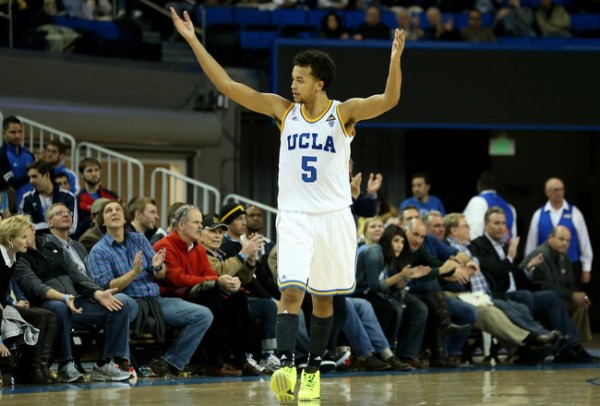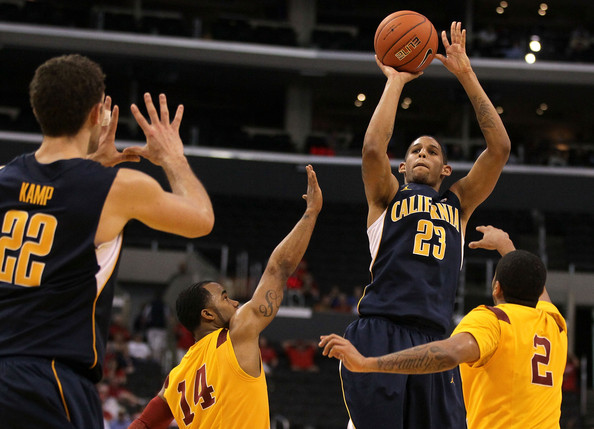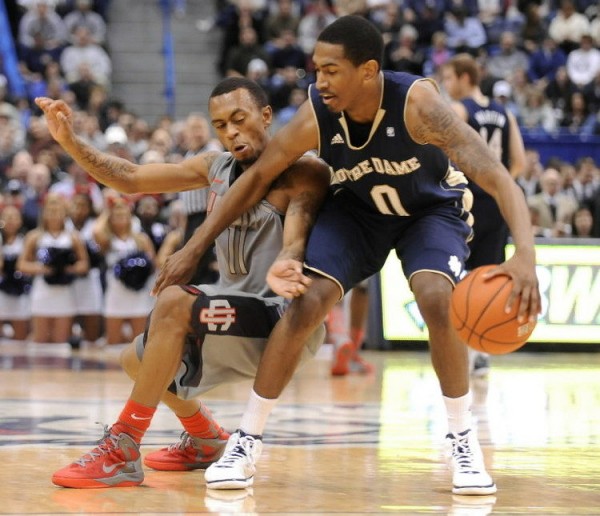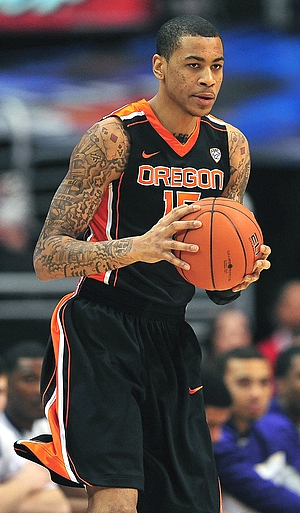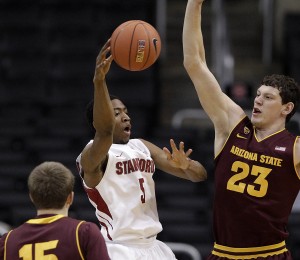Rushed Reactions: UCLA 68, Stanford 60
Posted by AMurawa on January 5th, 2013Andrew Murawa filed this report after Saturday afternoon’s Pac-12 contest between UCLA and Stanford in Pauley Pavilion.
Three Key Takeaways.
- It’s Not Just Offense. While there were moments today when UCLA looked halfway decent on the offensive end for a couple minutes at a time, this was by no means an explosive scoring performance for a Bruins team that has come to be known for its offensive ability. It took more than 10 minutes for somebody in a white jersey without the name Wear on the back to score a bucket. Then there was a stretch of three minutes late where the Bruins turned it over seven times (after previously coughing it up just six times in the first 35 minutes). Follow that up with Jordan Adams missing three straight front-ends of one-and-one opportunities (this for a guy who made his 33 straight FTs earlier in the year and came into the game shooting almost 87%) and it looked like UCLA was doing their best to give this one away. But, when all was said and done, UCLA limited Stanford to just 0.85 points per possession and, on the weekend (albeit against admittedly pedestrian offenses from the Northern California pair) defended to the tune of just 0.89 PPP. As we mentioned Thursday night, this squad is never going to turn into Howland’s 2007 defensive juggernaut, but this team is improving on an almost game-by-game basis.
- Stanford Rotation. Two nights ago, in a loss at USC, the five Stanford players who Johnny Dawkins brought off the bench actually played 51% of the team’s minutes, with Chasson Randle earning just 15 ineffective minutes and Dwight Powell getting just 23 foul-plagued minutes. That game actually marked the third straight game where Dawkins has used the same starting lineup, but this afternoon against UCLA, two of those guys were pulled for replacement. This has been an ongoing issue all year long as Dawkins has played 13 different guys this year (although Anthony Brown is out for the season now), with 12 guys having earned at least 20% of the team’s minutes and only two (Randle and Josh Huestis) earning better than 70% of the minutes. There have been six different starting lineups this year in just 15 games after he fielded 15 different starting lineups last season. Last year’s run to the NIT title was highlighted by fantastic performances by Randle and Bright, as the backcourt duo, who showed great chemistry together, averaged just shy of 60 minutes per game between them. This year, those guys have seen their minutes jerked around, and while admittedly neither has been great when in the game, Dawkins needs to give these guys some semblance of stability so that players can be more comfortable in their roles and build a rapport with their teammates. After the game on Thursday night, some of the UCLA players talked about how with a couple of player defections, the fact that they’re running a seven-man rotation has allowed everybody to get comfortable with their teammates, and roles and into a flow. Dawkins should take some notes. And, give him some credit as today he trimmed his rotation, playing just nine guys and giving all five of his starters at least 27 minutes. Concern about Bright, who earned just 14 minutes and was largely invisible in them (one three-pointer, one assist, one turnover) should persist. Read the rest of this entry »






























